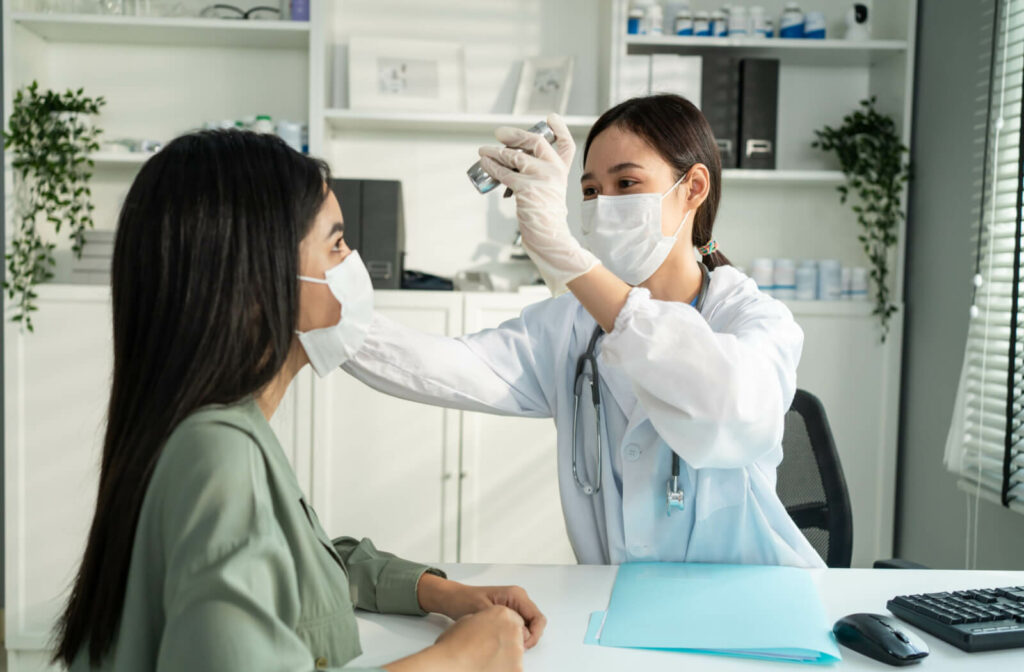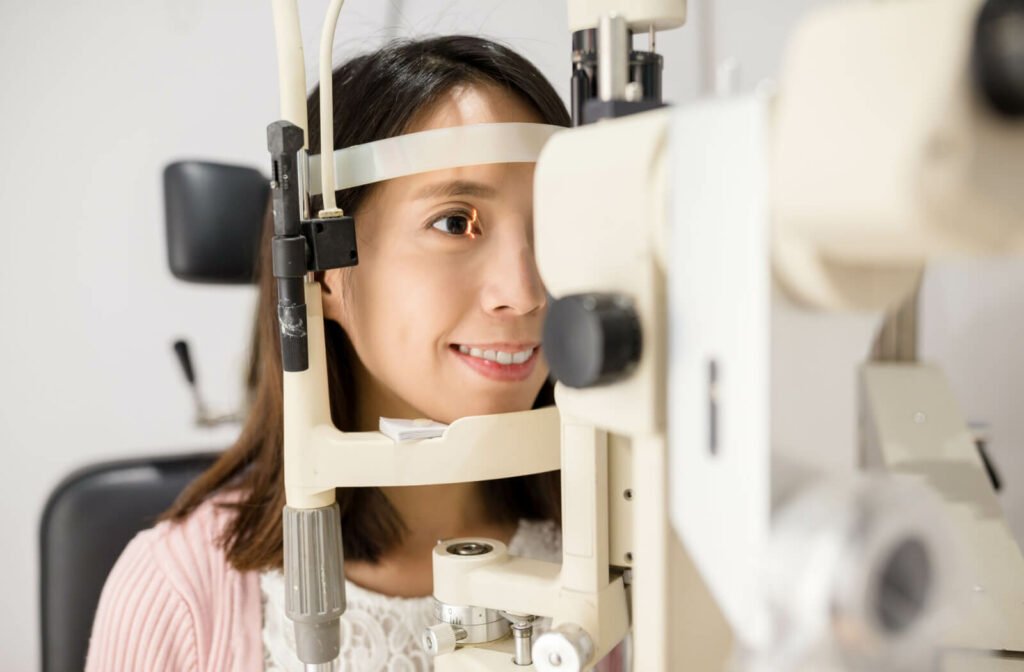Diabetes-related eye disease is the leading cause of preventable blindness in people aged 30 to 69 in North America. If you have been diagnosed with diabetes you should have your eyes examined at least once a year because eye exams can tell you how diabetes is affecting your overall health.
In many ways, diabetic eye exams are similar to regular eye exams. During a diabetic eye exam, however, your eye doctor will pay special attention to the health of your retina and the integrity of the blood vessels in your eye.
How Diabetes Affects Ocular Health
Diabetes is a disease that impairs the body’s ability to produce insulin, resulting in elevated glucose (sugar) levels in the blood. Chronically high blood sugar levels can put you at risk for a variety of eye problems such as blurry vision, cataracts, glaucoma, and most seriously, diabetic retinopathy.
Cataracts
The lenses of your eyes become less flexible, less transparent, and thicker as you age. When you have diabetes, high blood sugar levels can cause structural changes in the lens of the eye, which can speed up the development of cataracts.
If you have diabetes, you may be more likely to develop cataracts depending on how long you’ve had it, how frequently your glucose levels rise above your target range, and whether you have macular edema.
Cataracts may go unnoticed because symptoms are minor until the clouding affects the center of the eye, at which point the cataract can progress quickly.
Glaucoma
Glaucoma is a group of eye diseases that can damage the optic nerve, which connects the eye to the brain. Diabetes doubles the risk of glaucoma, which can cause vision loss and blindness if not treated early.
Diabetic Retinopathy
Diabetic retinopathy develops when blood vessels within the eye begin to leak blood and fluid into the retina, causing damage and permanent vision loss. Early detection and treatment are critical for maintaining your vision.
Diabetic retinopathy often goes unnoticed until vision loss occurs. When you do have symptoms, you may notice:
- Loss of central vision, which is used when reading or driving
- Color blindness
- Blurry vision
- Vision holes or black spots
- Floaters, or small spots in your vision caused by bleeding

What Is a Diabetic Eye Exam?
Anyone with diabetes should have regular eye exams. This allows your optometrist to examine the blood vessels of the retina for changes that may indicate diabetic retinopathy. Here’s what to expect from a diabetic eye exam:
Pupil Dilation
Every diabetic eye exam requires pupil dilation to see the inner structures of your eyes, specifically your retina, optic nerve, and blood vessels in the back of your eye.
By inserting special eye drops into your lower eyelids, your eye doctor will dilate your pupils. The eye drops typically cause temporary blurred near vision and light sensitivity and take about 30 minutes to work. These side effects usually go away after a few hours.
Following a retinal examination, additional tests, such as fluorescein angiography or optical coherence tomography, may be recommended.
Fluorescein Angiography
After your eyes have been dilated, a dye is injected into a vein in your arm. The dye is then circulated through the blood vessels of your eyes, and photographs are taken. The images can identify blood vessels that are closed, broken, or leaking.
Optical Coherence Tomography (OCT)
OCT generates images of your eyes. These images are taken from a cross-section to allow your doctor to see fine details of your eyes. These images depict the thickness of your retina as well as areas where fluid may leak from damaged blood vessels.
Glaucoma Testing
Early detection of glaucoma is critical for the effective treatment of this potentially blinding disease. Glaucoma is known as “The Silent Thief of Sight” because it rarely causes symptoms until permanent vision loss has occurred.
The “puff” test, in which your eye doctor points a tonometer at your open eye, is commonly used to screen for glaucoma. The tonometer blows a puff of air into your eye and then calculates your intraocular pressure based on your eye’s response to the air.
Vision Testing
The vision test is an important part of any eye exam because it measures your vision clarity for distant images.
You will be asked to identify large and small letters on a distant eye chart during this test. To identify any visual discrepancies between the two eyes, each eye is tested separately.
When Should You Get a Diabetic Eye Exam?
If you have type 1 diabetes, you must see a diabetic eye specialist within five years of your diagnosis. If you have type 2 diabetes, you should see a diabetic eye specialist as soon as possible after being diagnosed.Plan to see your diabetic eye specialist at least once a year after your initial diabetic eye exam. Schedule an appointment with Charles Korth Optometry as soon as you notice symptoms such as blurry vision, flashes, or floaters in your vision.




